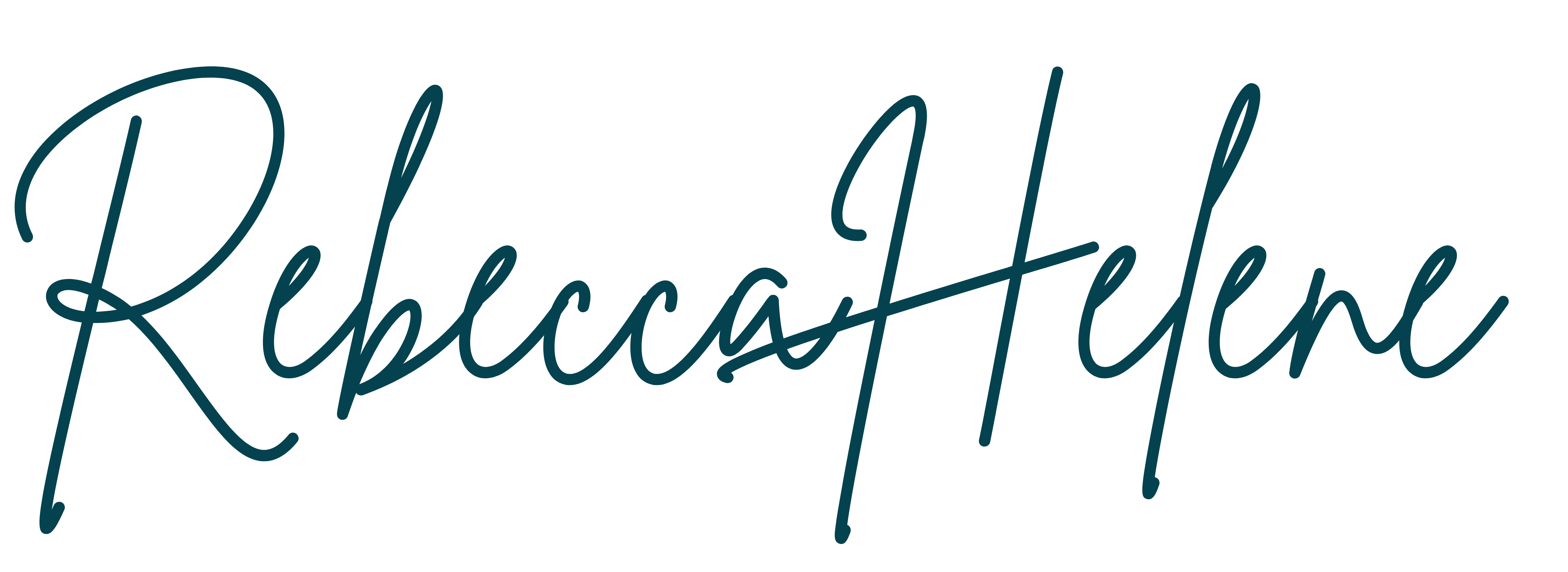DISCLOSURE: THIS POST MAY CONTAIN AFFILIATE LINKS, MEANING I GET A COMMISSION IF YOU DECIDE TO MAKE A PURCHASE THROUGH MY LINKS, AT NO COST TO YOU. PLEASE READ MY DISCLOSURE FOR MORE INFO.
Anxious minds are the worst when it comes to bedtime. Sure, we all have those nights before the big exam, the big presentation, or the big day that keep the butterflies in our stomachs later into the night than we hope, knowing a good night’s sleep is more important that usual. But for some of us, those nights are far more frequent, and far less event-driven than we would like. It’s as if our body is a petulant child, knowing that the more it should do something, the less it wants to.
You struggle to relax and do your best to sleep, but the next thing you know, you turn to check the time and it’s 2:00AM – and now your stress level only jumps higher as you realize how many less hours you have to sleep before your 6:00AM alarm clock buzzes rudely at you to get moving.

Staying up thinking through the list of things you should have, could have, needed to get done that day and stressing about the things to come in the morning that you can’t risk letting fall through the cracks again – it’s not fun, and certainly not a healthy way to live.
Naturally, to avoid this scenario, I have tried countless methods trying to get to sleep more effectively, combing through all of the tricks in the book. Chapter one: count fluffy little white sheep as they leap over a rustic picket fence in a peaceful green field.
It’s never worked.

Page Contents
Counting Sheep Doesn’t Work
The “counting sheep to fall asleep” tactic developed from the concept that giving the brain a monotonous, repetitive activity helps to calm and relax it. It sounds sensible enough.
Except don’t try to tell my overactive mind that. My own thoughts hijack the sheep-count almost immediately. Anybody else with me on that one?
Then stick with me here, because I have finally found a word game that has been working wonders for me the last few weeks – far better than I ever expected.
I can’t find the article I first read about this in, so props to whoever brought it to my attention (happy to credit you once you’ve been found!) The short-hand, non-scientific and probably not as accurate explanation as I would like to share was basically that the primitive fight-or-flight mode of the brain does not effectively shut off with the trivial task of imagining sheep, for the exact reason many of us have experienced firsthand. Bigger issues are still capable of hijacking your thoughts and keeping you in stress-mode.
Instead, using word association can work your brain to just the right degree… and so far, it’s worked wonders for me!

Play this Mental Word Game Instead
Rather than letting your brain linger in an alert and analytic mode, try “cognitive shuffling.”
Developed by cognitive scientist Luc Beaudoin, cognitive shuffling, also known as serial diverse imagining, was presented in this 2013 research paper.
Don’t worry, it’s easier and much less scientific than it sounds, for those of us who don’t care as much about why it works, but are just happy enough if it works!
Cognitive shuffling is simply a method to scramble your thoughts, which enables you to divert your brain and focus on frivolous things (therefore not focusing on the high-stress, high-anxiety list that is preventing your sleep!)
When the mind can make organized jumps between random objects, it is more likely to turn off the “fight or flight” mode and recognize there is nothing more meaningful going on that it would otherwise try to stay awake and alert to analyze.

How to Use Cognitive Shuffling
When you are cozied up and ready for bed, settle in and try out the cognitive shuffle technique for yourself.
1.Choose a seed word.
Select a random word with at least five letters as a base word (called a “seed word” in cognitive shuffle lingo.) Aim to have a word with a variety of unique letters so that you don’t have several repeats. For instance, “bedtime” is a better seed word than “banana” because it has seven unique letters, and “banana” leaves you with only three unique letters: B, A and N.
“Bedtime” is the sample word used by Beaudoin, and the first word I attempted to use (spoiler alert – it worked!) Let’s stick with this one for the example since it’s so fitting.
2. Consider the first letter of your seed word.
Using the first letter, begin to list and visualize other words that begin with that letter. For example, if you are using “bedtime” as the seed word, start with the letter B and slowly, but consistently, think of and picture completely disassociated words that also begin with B.
The key is to use disassociated words– so avoid “bed, bedding, bedspread” as your words for the letter B. Equally so, try not to run through a single category for a letter, such as linking several foods in a row with “brownies, berries, bananas.” This is part of the shuffled, scrambled magic!
Otherwise, there are not a ton of rules. You can use people, places, things or even verbs and adjectives. Just don’t stress about rushing through words, don’t struggle too hard to get to the next word, and don’t use words that have any sensitive meaning or are emotionally charged.
Here’s an example starting with the “B” in Bedtime:
- Bowling: Imagine making a strike at your nearby bowling lane.
- Brownie: Imagine fresh baked chocolatey goodness (notice I still managed to make brownie fit in… just avoided listing the fruits afterward – just like in life 😊.)
- Brooklyn: Imagine a New York pizza spot or the infamous bridge.
- Bright: Imagine being outside on a sunny, cloudless day.

3. Move to the next letter in your seed word and repeat.
When you are bored of the first letter in your seed word or finding yourself stuck or repetitive, simply move on to the next letter and continue. In the “bedtime” example, we would move on to the letter E.
Continued Example: “E” Egg. Elephant. Europe. Earlobe.
Tip: Some letters are harder than others, especially vowels. If you find yourself in this situation, try to pick a second letter as well, and focus on the pair of letters together. For instance, instead of just the E, try “Em” if you get stuck. It might trigger easier recall about an Employee, Empire, and Emu to keep you on track.
4. Continue through all letters in your seed word.
If you get to the end, simply pick a new word and keep going. I have yet to make it all the way through a seed word successfully, speaking volumes about how well this has been working for me! Move at a slow but consistent speed, and truly try to picture each item so your brain stays focused on this functional but less analytical task.
5. Make it relaxing and fun. Don’t worry too much about the “rules,” like how the words shouldn’t be in the same category – just try not to make it a habit. I have found that some incredibly random words come to mind, including actors I wasn’t aware I even knew the names of!
The other fun piece about this system is that the method is an organized process to get you into cognitive shuffle mode, but you don’t necessarily even need to stick with a single letter at a time. If your creative mind lets you jump from dishwasher to airplane to Bob Dylan without a hitch, let it flow!

Resources
Always give credit where credit is due! While trying to dig up the original article where I first discovered this technique, I stumbled onto Beaudoin’s research article (linked in the text above.) That led me to finding the smartphone app that has been developed utilizing this system, called mySleepButton.
I haven’t used it so this is not an endorsement and I’m not affiliated in any way, but it looks like an option for those who would prefer not to conjure up their own random words. Instead, you may find it more relaxing to listen to the app and visualize the random words given as you doze off.
Final Thoughts
My brain is always racing at night, and this has truly been working for me well. The first few times, I was asleep by the second or third letter of my word. After using the technique consistently for a couple of weeks, I felt my vocabulary losing diversity (all of my “B” words were the same each night, etc.) But then, I let my mind jump into full free-for-all without linking the letters together and it worked just as well.
It’s free and simple, so at the very least, give it a try for a few nights. I hope some of you will comment below and share whether it worked for you! Have you tried out the app or did you go traditional and tech-less? Tell me below!
Sweet Dreams!



 I create resources for female entrepreneurs and career-driven women striving to break out of their comfort zones and through the glass ceiling.
I create resources for female entrepreneurs and career-driven women striving to break out of their comfort zones and through the glass ceiling.


